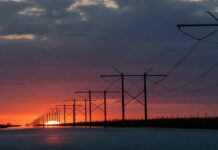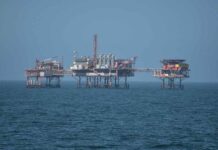The plant provides electric energy to the northern sector of the Interconnected Central System. In 2006, approximately 2,473GW, or 6.1%, of the area’s gross electricity generation was produced by the plant.
Electrica Guacolda power plant
The Electrica Guacolda plant is composed of three units powered between 150kW and 152kW. The first two units generate 152kW each, while the third unit generates 150MW. Each unit consists of a boiler, a steam turbine, a generator and a steam condenser.
The natural circulation Mitsubishi boilers are equipped with water tubes of induced shot. The maximum steam flow is 440t per hour and it operates at a maximum pressure of 165 bar. The entry and exit reheated pressures of the boiler are 36.7 bar and 34.2 bar, respectively.
“In 2006, 6.1% of Huasco’s electricity was produced by Electrica Guacolda.”
The152kW-powered turbines operate at a velocity of 3,000 rpm. Vacuum discharge takes place at an absolute pressure of 3.7cm Hg. Steam enters at a pressure of 159 bar and at a temperature of 537ยฐC. The temperature of the reheated steam is 537.8ยฐC.
The generator produces electrical energy at an exit tension of 13.8kW. The operating velocity of the generator is 3,000rpm and the output frequency is 50Hz.
The third unit of the Guacolda power plant is equipped with flue gas desulphurisation (FGD) equipment and bigger electrostatic precipitators. Guacolda is the first FGD-fitted power plant in Chile.
Technology
The Electrica Guacolda plant converts latent chemical energy into steam (thermal energy) in the boiler through combustion.
“The plant is connected via 135km, 220kW lines.”
Part of the energy is returned to circulating water, which increases the temperature to boiling point, converting thermal energy into mechanical energy.
With the pressure of the hot steam the turbines begin to move along with the rotor of the generators. The mechanical energy is converted into electrical energy.
Construction of Electrica Guacolda
The Electrica Guacolda plant was constructed in phases between 1995 and 2009. The first unit was commissioned on 29 July 1995. During this period a 1.500t per hour, multipurpose wharf and a 220kW substation were also constructed.
On 22 August 1996 a second unit was added to support the growing electric consumption in the region. The third unit came onstream on 30 July 2009.
Grid network
The Electrica Guacolda plant is connected via 135km, 220kW lines in a simple circuit. Located between substation Maitencillo and substation Cardones, the line carries all the production of the power station to the main network of SIC.
A 34km long transmission line provides connection to the SIC at the Maintencillo substation. Connection from Maintencillo to Cardones is provided by the line’s remaining 101km
Chile’s power market
Chile’s electricity consumption stood at 45.62TWh in 2009, ranking 46th in the world. Approximately 25tTWh, or 6.29%, of the electricity consumed in 2009 was generated through thermal sources including oil, hydro, gas and coal.
“Chile’s electricity consumption for 2009 was 45.62TWh.”
Oil was the dominant fuel meeting 60.5% of the primary energy demand (PED). Hydro, gas and coal accounted for 19.5%, 8.4% and 11.6% of the PED.
Historically, the major source of power in Chile has been hydropower. However, due to the seasonal nature of the hydroelectric power generation system, the Chilean Government has resorted to increasing thermal power generation through natural gas and coal.
Previously Chile secured energy resources primarily through imports. The natural gas crisis in 2004, however, forced the Chilean Government to turn to coal-fired power plants because Argentina had limited exports of natural gas to the nation. Since then coal-fired power plants have received renewed importance.





































